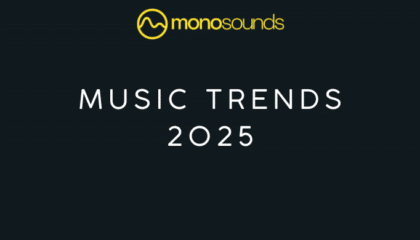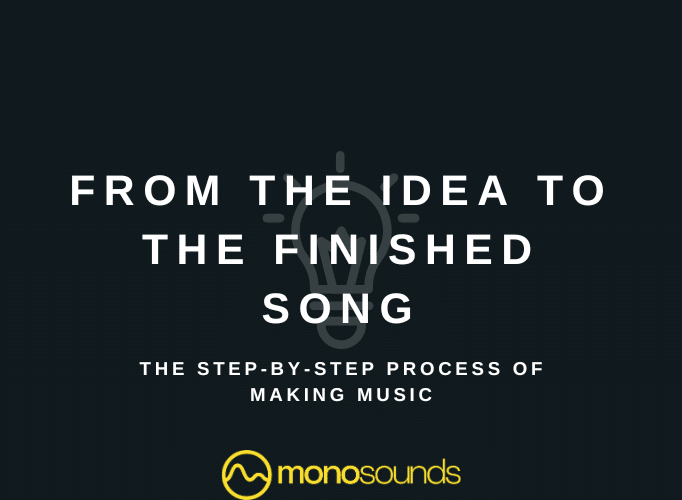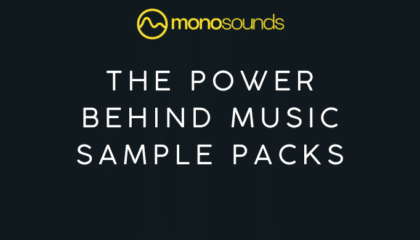
Title: Music Trends 2025: What’s Blowing Up on TikTok and…

Every musical composition begins with the birth of an idea, followed by the lengthy process of songwriting. For musicians and songwriters, it is important and exciting, allowing them to unleash their creativity and create a piece that will resonate in the ears of listeners.
Songwriting is a painstaking process that can take days or even weeks. It’s not just technical work, but also creative work that requires a keen mind, a deep understanding of music, and a sense of taste. It is important not only to be able to play instruments and compose melodies, but also to be able to express your thoughts and feelings through words and music.
Today we’re going to look at a step-by-step songwriting process that will help you create quality compositions, find inspiration, and overcome creative stagnation. We’ll look at aspects such as creating a song concept, writing lyrics, melody, and arranging. All of the information presented will definitely prove useful to anyone seeking creative success in music.
Creating an idea is the first and most important stage of the songwriting process. The idea is the foundation of the entire song, and the success of the entire project depends on how well it has been thought through. Here are a few approaches that are sure to help the musician with finding ideas for a future song:
Once you have an idea, you need to turn it into the basis for a song lyric. Here are a few steps to do that:
When the idea and lyrics are ready, it’s time for the next step: writing the melody. This process is different for every musician, but there are a few common techniques and approaches that are sure to help you in this process.
At the same time, writing a melody is a unique job that requires patience and creativity. Don’t be afraid to experiment and find your own unique style.
Rhyming is one of the main elements that make the lyrics melodic and memorable. Good rhyming helps to create an emotional sound to the song and makes the listener repeat it in their head.
There are many different types of rhyming, such as paradoxical, double, cross, and many others. Each of these types creates a distinctive sound and can be used to create different moods and emotions.
However, don’t get hung up on just rhyming, because the main thing is to keep the meaning and idea of the song. Sometimes it is useful to use non-obvious rhymes or apply them in non-standard places to add interest to the text.
Metaphors and allegories are an effective way to add interest and imagery to song lyrics. They help create unique imagery and capture the listener’s attention.
Metaphors are comparisons of two unrelated concepts that help describe the idea of a song in more vivid and memorable images. Allegories are stories in which events, characters, and details have symbolic meaning.
When using metaphors and allegories, it is important to choose words that fit the genre and mood of the song. For example, rock music may use harsher and more emotional metaphors, while pop music may use metaphors that are lighter and more playful.
Harmonies are combinations of musical sounds that create the basis for a melody. Using harmonies correctly can make a big difference in the sound of a song and make it more memorable. Here are a few techniques that are sure to help you use harmonies in your writing:
Songwriting tools and programs make the process of creating music and lyrics much easier. Here’s a brief look at some categories of songwriting tools and programs.
DAW is considered a key tool for creating and recording music. The list of these programs is huge, so let’s list the most popular ones: Ableton Live, FL Studio, Logic Pro X, Cubase and Pro Tools, which provide a wide range of tools and features for creating, recording, editing and mixing music.
Samplers and virtual instruments allow you to create sound effects and play a variety of instruments without the need for real ones. Native Instruments Kontakt, Spectrasonics Omnisphere, and Xfer Records Serum are particularly popular, providing libraries of samples and sound effects as well as virtual instruments for creating music.
Audio editors are used to edit and process audio recordings. Good examples are Adobe Audition, Audacity, and Steinberg Wavelab, which allow you to edit, trim, merge, and process audio files.
Dictionaries and thesauri are especially useful for writing texts. They allow you to find synonyms and antonyms for words, as well as provide definitions and examples of their use.
Note editors are used to write and edit musical notation. Beginners are recommended to use Finale and Sibelius, which provide tools for writing notes, creating parts, and arranging music.
The process of recording a song is very different for every musician or sound engineer. It all depends on the genre and style of music, the instruments and equipment used in the process. For beginners, we’ll recommend a step-by-step algorithm that will help you decide and understand how and where to start.
Songwriting is a creative process that takes time, effort, and the ability to use personal emotions and imagination. But don’t be afraid of the challenges and start getting creative today.
If you’re just starting your songwriting journey, it’s worth paying attention to ideas and concepts, lyrics, melody and recording. Don’t forget that each stage has its own characteristics and requires certain knowledge and skills. Start with a small project and don’t expect your first song to be perfect. Don’t be discouraged, as the songwriting process is about constant improvement and working on yourself, so with each new song you get a burst of confidence in your abilities.
Be sure to study the work of other songwriters and use new techniques and tools to improve your songs. Never rest on your laurels, always try to move forward and improve.
And finally, don’t forget the most important thing: songwriting should bring you pleasure and be an expression of your individuality and creative vision of the world. Be bold and original in your ideas and don’t be afraid to go beyond the usual genres and styles.

Title: Music Trends 2025: What’s Blowing Up on TikTok and…

Introduction Hey there, it’s Maxim Hetman — sound designer, mixing…

Title: Why Custom Serum Presets Beat Stock Sounds Every Time:…

So, you’ve been inspired by the insane soundscapes of Flume…
